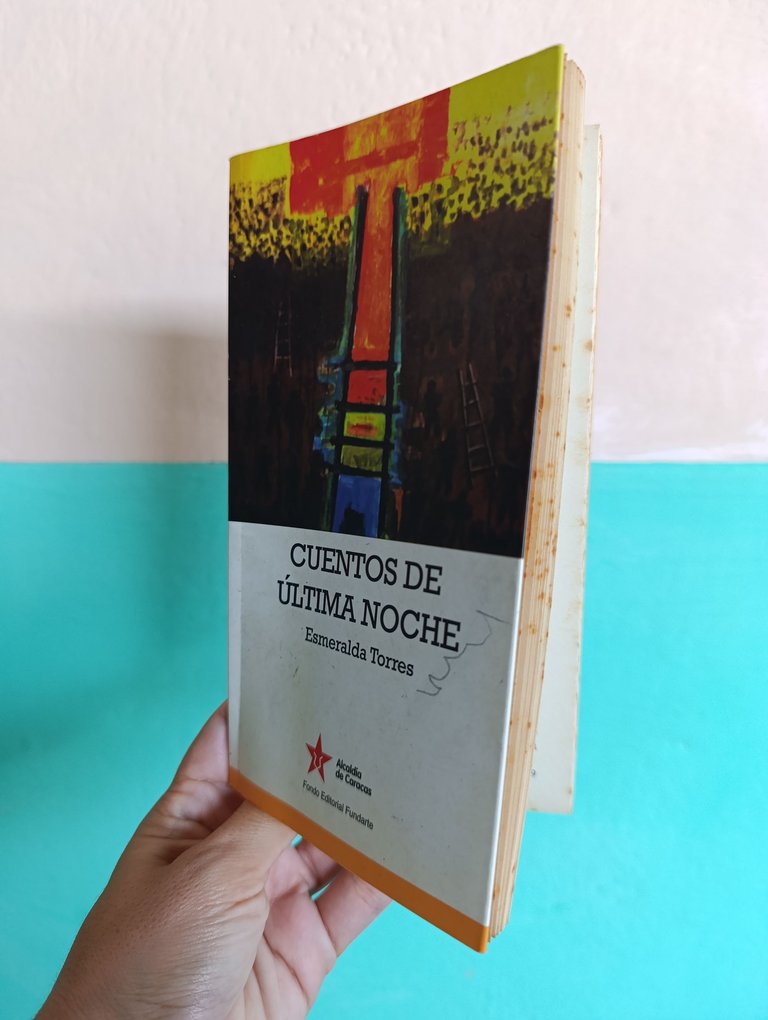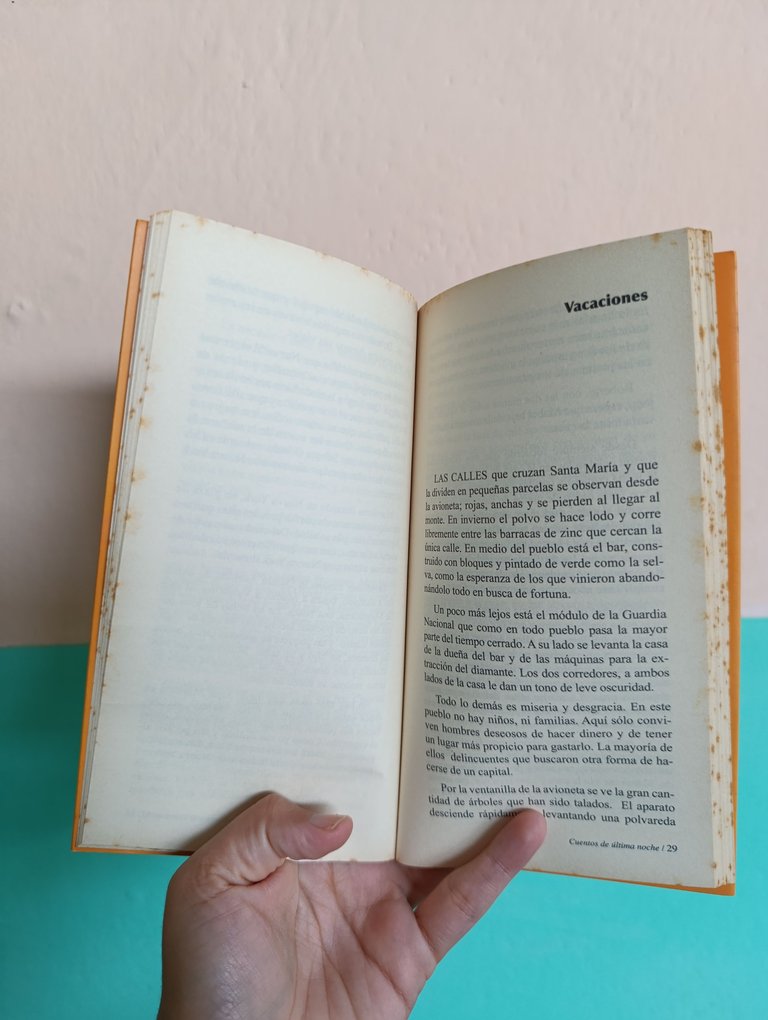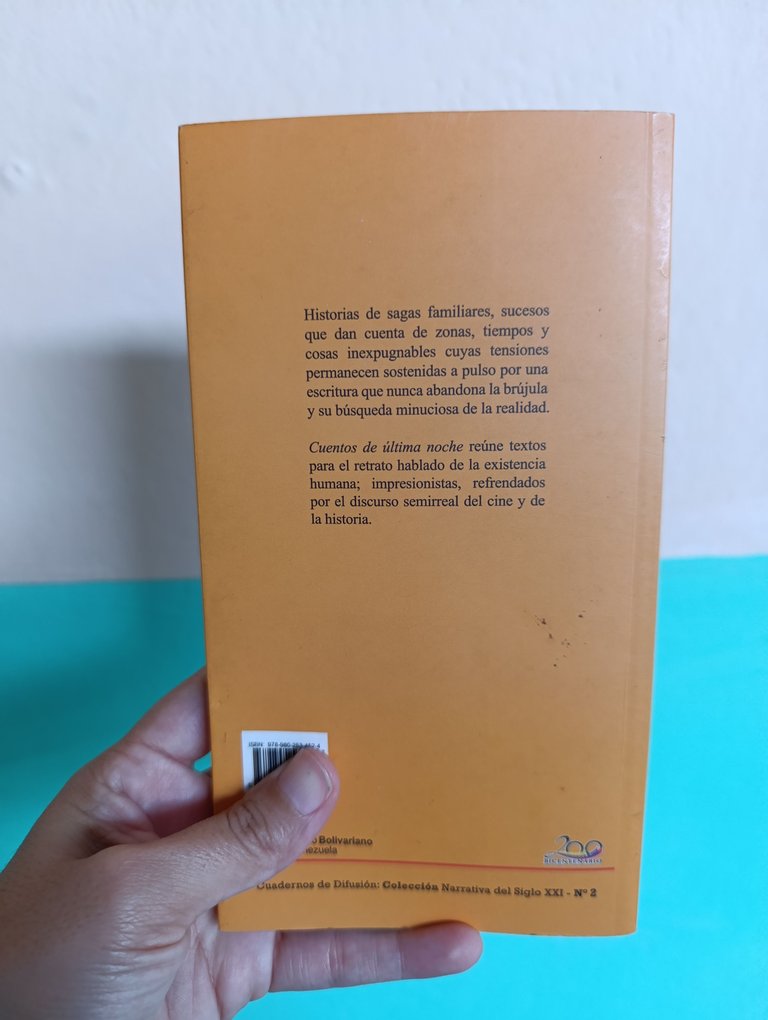Venezuelan author Esmeralda Torres, through Last Night Tales, presents us with a series of stories framed in a recognizable social reality. Although most of her stories are short, her narrative is condensed to the point of sparing details to capture the substance of everyday life, where violence and marginality scourge each character who clings to give some sense to their existence.
Torres, in addition to constructing complex stories that reflect rawness, uses simple language, that is, without resorting to so many embellishments, which contributes to making his proposal accessible and above all credible, since by presenting popular areas as scenarios, he appropriates the discourse that identifies their inhabitants.

Among the most outstanding stories, according to my criteria, are: Neither is Frida Kahlo's painting, a story that in a single scene presents domestic violence as the axis of the story. A woman lives in permanent anxiety before the imminent arrival of her partner, who arrives every Friday in a drunken state, to the home they share, attacking whatever he finds in his path, including her most precious possessions.

In The sounds of this hour, actions related to violence on Venezuelan highways, especially at night and in the early hours of the morning, are described. A couple is fleeing from a mysterious past and in their escape they stumble upon a traveler's trap. The narrative voice maintains tension throughout the story, emphasizing the events, a strategy that keeps the reader attentive.

On the other hand, the story The Student addresses the expectations that are usually held about the professional future when going through college, but there is also the other side of the coin, the students who fall by the wayside and fail to graduate despite having the talent and willingness to achieve the goal.

Meanwhile in Touch me, a story that begins in the intimacy of two lovers who give themselves to lust, with the possibility that it may be the last time it happens because the man is committed to a subversive movement that plans to attack the city the next day. Human relationships develop within a conflictive environment where violence is naturalized while society cracks.
In summary, Last Night Tales is an engaging work because the narrative is based on news, anecdotes and the everyday, Esmeralda Torres uses these elements to portray a troubled country marked by inequality and violence. Her narrative feels light, as if one were listening to a conversation, which makes this book more enjoyable to read.
Versión en EspañolLa autora venezolana Esmeralda Torres, a través de Cuentos de Última Noche, nos presenta una serie de relatos enmarcados en una realidad social reconocible. Si bien la mayoría de sus cuentos son breves, su narrativa se condensa a tal punto de ahorrar en detalles para capturar lo sustancial de la cotidianidad, donde la violencia y la marginalidad azotan a cada personaje que se aferra a darle algún sentido a su existencia.
Torres, además de construir historias complejas que reflejan crudeza, emplea un lenguaje sencillo, es decir, sin recurrir a tantos adornos, lo que contribuye a que su propuesta sea accesible y sobre todo creíble ya que al presentar zonas populares como escenarios, se apropia del discurso que identifica a sus habitantes.

Entre los relatos más destacados, según mi criterio, se encuentran: Tampoco está el cuadro de Frida Kahlo, relato que en una sola escena presenta a la violencia doméstica como eje de la historia. Una mujer vive en permanente zozobra ante la inminente llegada de su pareja, que cada viernes llega en estado de ebriedad, al hogar que comparten, arremetiendo contra lo que encuentre a su paso, incluyendo los bienes más preciados de ella.

En Los sonidos de esta hora, se describen acciones relacionadas con la violencia en las carreteras venezolanas, sobre todo de noche y de madrugada. Una pareja se encuentra huyendo de un misterioso pasado y en su escape tropiezan con una trampa para viajeros. La voz narrativa mantiene la tensión durante todo el relato, haciendo énfasis en los sucesos, estrategia que mantiene al lector atento.

Por otra parte, en el cuento El estudiante se abordan la expectativas que por lo regular se tienen acerca del futuro profesional cuando se transita por la universidad, pero también está la otra cara de la moneda, los estudiantes que se quedan en el camino y no logran graduarse a pesar de poseer el talento y la disposición de alcanzar la meta.

En tanto en Tócame se plantea una historia que inicia en la intimidad de dos amantes que se entregan a la lujuria, asomando que puede ser la última ocasión que suceda porque el hombre está comprometido con un movimiento subversivo que al día siguiente tiene planificado atacar en la ciudad. Relaciones humanas se desarrollan dentro de un ambiente conflictivo donde lo violento se naturaliza mientras la sociedad se resquebraja.
En síntesis, Cuentos de Última Noche es una obra que atrapa porque la narrativa parte de las noticias, las anécdotas y lo cotidiano, Esmeralda Torres se vale de esos elementos para retratar un país convulso marcado por la desigualdad y la violencia. Su narrativa se siente ligera, como si se estuviera escuchando una conversación, lo que hace más agradable la lectura de este libro.
✓Photos from my personal gallery, edited with Fotocollage.
✓Text translated with DeepL.
📚📙📚📙📚📙📚📙📚📙📚📙📚📙📚📙
✓Fotos de mi galería personal, editadas con Fotocollage.
✓Texto traducido con DeepL.
Posted Using INLEO